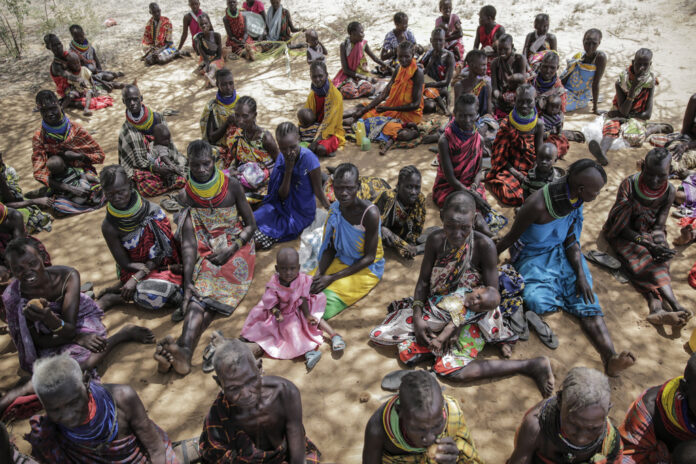
NAIROBI, Kenya (AP) — Humanitarian agencies are calling for full funding of the U.N.’s $7 billion appeal for the Horn of Africa during a pledging conference this week, citing a growing crisis and the need for urgent lifesaving intervention.
The U.N. says the region is facing the worst drought in 40 years, with more than 43.3 million people in need of assistance in Somalia, Ethiopia and Kenya, and more than half of those lacking access to sufficient food, according to the U.N.
The International Rescue Committee said that until now the appeals have received less than a quarter of the donations they need.
“Efforts to combat food insecurity need to be urgently scaled up across a wider group of governments, international financial institutions and climate actors,” said the IRC’s chief executive, David Miliband.
The U.N on Wednesday is convening a high-level pledging event at its headquarters in New York, where member states and partners will be encouraged to commit financial support to the Horn of Africa crisis.
Humanitarian organizations say time is running out as affected communities have gone for months with little or no food.
“It’s beyond urgent. … We have averted famine before, and we can do it again. … People are already dying and there’s no time for declarations,” Deepmala Mahla, CARE International’s vice president for humanitarian affairs. told The Associated Press.
A famine is yet to be declared in Somalia, where more than 6 million people are going hungry, but some humanitarian and climate officials have warned that trends are worse than in the 2011 famine in Somalia in which a quarter-million people died.
Formal famine declarations are rare because data to meet the benchmarks often cannot be obtained because of conflict, poor infrastructure or politics. Governments can be wary of being associated with a term of such grim magnitude.
Local nongovernmental organizations like Somalia’s Hormuud Salaam Foundation say there’s need for sustained funding.
“For lasting change, we must equip local organizations and local people with the tools to face the inevitable climate shocks of tomorrow,” the foundation’s CEO, Abdullahi Nur Osman, told the AP.
Persistent conflict in some of the affected areas, combined with climate change effects, have contributed to the growing crisis.
Parts of Somalia and Ethiopia are currently experiencing flooding during the ongoing rainy season and millions of people have been displaced.
The affected areas, mostly occupied by herders, had seen prolonged dry seasons that left livestock, which are a source of livelihoods, dead.
Parts of Somalia are grappling with insecurity due to the al-Shabab extremist group that has carried out numerous large-scale attacks.
Northern Ethiopia experienced conflict for more than two years as regional forces clashed with national forces. Hundreds of thousands of people died and the situation remains fragile, seven months after a peace deal was signed.


